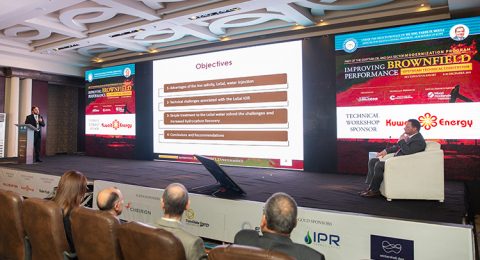By Amanda Figueras
Nigeria is an eloquent example of a gas flaring paradox. While exerting efforts in stopping routine gas flaring for decades, an end to this practice seems to be still distant for the country. It seems that Nigeria is taking one step forward and two steps back.
This case demonstrates evidently how adopted regulatory framework of gas flaring reduction could fail. Nigeria is the country “where stringent regulations are not implemented and the regulator is ineffective,” as Frederik Beelitz, Managing Director of Economic Consulting Associates (ECA), presented in his paper at a Cairo workshop on gas flaring. He added that flaring in Nigeria is more economical than marketing gas due to the unviable domestic gas market.
The Cheapest Method
Nigeria is the largest oil producer in Africa and one of the world’s top five exporters of liquefied natural gas (LNG). The country’s industry first began to engage in gas flaring with the discovery of oil in commercial quantities in Oloibiri in 1956. Oil companies found this practice as the cheapest method of removing the associated petroleum gas (APG). At that time, relatively little demand for gas in many parts of the world made the prospect of investing in the harnessing, liquefaction, and export of natural gas less attractive than it is today, and the APG was usually burned off.
As the Nigerian economy is largely dependent on the oil and gas sector, which accounts for about 95% of its foreign exchange earnings, 40% of its GDP, and 75% of federal government total revenue, the federal government initiated gas flaring reduction policies to boost oil production while preserving natural gas resources. By creating a new regulatory framework for gas flaring reduction, the government was targeting gas sector’s deficiencies, primarily the lack of infrastructure that has been continuously preventing monetizing flared natural gas from happening.
Oil flaring in Nigeria was thus formally banned in 1984 and declared “unconstitutional” by the Nigerian Supreme Court in 2005, but the federal and state authorities have been unable to enforce the regulations on oil companies to stop this practice. For years to come, flexible regulations were in place with no punishments being recorded.
The US Energy Information Administration (EIA) estimated that the country contributes about 13% to the global gas flaring total. While the volume of flared gas in the country slightly decreased due to a combination of several factors, still some 45% of Nigeria’s gas was flared back in 2011. According to the latest estimates published recently by the National Oceanic and Atmospheric Administration (NOAA), Nigeria’s upstream sector flared 9.4bcm in 2013 and 8.4bcm in 2014.
This raises critical questions as to which factors in reality could have contributed most to the decline. Some analysts point to the fact that the drop in gas flaring volumes reflected less the purposeful implementation of the county’s strategy and was rather an outcome of the current problematic dynamics in the global oil market. Shrinking oil production in the country that was hampered by instability due to destructive militant attacks on the oil fields and pipelines that caused supply disruptions, partly contributed to the actual effect.
Formalized Inefficiency
Despite minor achievements, Nigeria, nonetheless, remains the biggest gas flarer on the continent and the sixth largest in the world. Given the country’s decade-long efforts in curbing gas flaring, its overall performance is rather limited, a researcher, Dennis Otiotio, from the University of Tulsa, Oklahoma, US, concluded in a study in 2013.
Reasons? A mix of ineffective, inefficient, and non-transparent gas flaring legislation, a lack of political will to implement relevant policies, and the absence of capable, independent, and well-funded regulatory agencies.
Inefficiency in enforcing national gas flaring regulations was dubbed as the key factor. Hence, further formal efforts were adopted with a goal to stop the wasteful practice on a large scale. The federal government established the Department of Petroleum Resources (DPR) under the Ministry of Petroleum, which was to ensure the compliance of oil and gas companies’ operations with the national industrial and environmental regulations. In spite of these massive formalized structures and processes in the country, it was reported that a general bureaucratic practice by the DPR undermined possible positive outcomes. Routine flare is still being allowed by the Department, which is believed to be raising operators’ gas flaring limits in discretion. Issuing permits seems to be a mere formality. Operators are granted exceeding allowance based just on their merits. When their performance in relation to gas flaring reduction is considered satisfactory, the DPR is reported to be lenient.
The 2013 study by Otiotio also pointed to the conflict of interest on part of the government, regulatory officials, and the oil and gas companies, with large scale corruption penetrating all levels of the sector.
The problem is likely strongly tied to the fact that the Nigerian government has a double role in the system. It is both a regulator and an owner-operator in the oil and gas industry. The government owns the oil and gas in place, and through the Nigerian National Petroleum Corporation (NNPC), it has major shares in Joint Ventures (JV) with other oil and gas companies. Under this arrangement, regulating the oil and gas sector comes as an indirect imposition of restrictions on the NNPC itself. Moreover, oil and gas companies can usually blame their inability to meet the gas flaring deadlines and limits on NNPC’s failure to meet its financial obligations towards JVs. Most importantly, since the government has the biggest share in oil revenues, a stringent enforcement of gas flaring regulations would adversely affect the state’s income. Therefore, the rules are relaxed to allow for continuous production of oil and gas.
Gas for Power
The cited study further suggested it was necessary for the Nigerian government to encourage the construction of needed gas infrastructure, and improve the gas market climate in order to upgrade its gas flaring records. The measures are something that could be achieved by resorting to international financial institutions to raise required funds and by promoting public-private partnerships that would lead to collaboration in eliminating unsustainable practices.
In Nigeria, “historically, investment in the oil and gas sector has been focused on oil, to the detriment of gas,” a liquefied natural gas producing company, Nigeria LNG Limited (NLNG) lamented the lack of accomplishments in gas flaring elimination. Another impediment to decreasing gas flaring, apart from the volatile security situation in Niger Delta, has been a lack of partner funding, stated Royal Shell Dutch, one of the largest gas producers in the country.
Despite that, the country has monetized over 4.7tcf of APG, which would have otherwise been flared and wasted, NLNG said in an email interview with Egypt Oil&Gas.
Nigeria’s efforts to improve the gas sector reach back to 2008 when the government developed a Gas Master Plan that promoted investment in pipeline infrastructure and new gas-fired power plants. The aim was to help reduce gas flaring and provide more gas to fuel electricity generation in line with electricity sector’s privatization, which was believed to increase efficiency.
The Nigerian government therefore prefers to utilize associated gas for domestic purposes with a focus on power generation, Carbon Limits Nigeria explained to Egypt Oil&Gas in an email. Nonetheless, progress has been limited, largely also on account of security risks in the Niger Delta that complicated the construction of infrastructure. In the end, according to a consultancy firm, Oxford Business Group, despite its hydrocarbon-rich economy, Nigeria produces less power than a medium-sized European city.
Gathering Associated Gas
Gas flare solutions vary by location and feasibility. International oil major companies such as Shell, ExxonMobil, Chevron, Total, and ENI have already developed similar projects in the country, some of which are specifically focused on monetizing the gas that is currently being flared.
Amongst those projects, the Shell Petroleum Development Company of Nigeria Limited (SPDC) began a multi-year program in 2000 to install equipment to capture associated gas from its oil producing facilities. Its goal was to install Associated Gas Gathering (AGG) infrastructure to recover 90% of the associated gas produced in this process. The other 10% was to be dealt with via local gas offtake agreements with third parties for small-scale local projects. More than 40 Nigerian investors were interested in the scheme. Shell contended that the program was, however, sidelined due to external factors. Funding from the NNPC declined, security concerns made it unsafe for staff and contractors to work in large parts of the Delta for long periods of time, and contracts approval processes were delayed.
Despite these issues, between 2000 and 2012, SPDC managed to install AGG infrastructures at 37 sites covering about 66% of its APG. Unfortunately, 18 of these facilities were either vandalized or not commissioned because of the crisis in the Niger Delta stretching between 2006 and 2010. Notwithstanding, in total, the SPDC’s flaring dropped by about 75% between 2003 and 2012 from over 0.66bcf/d to about 0.16bcf/d, and flaring intensity was reduced in the same period from about 0.74mscf/bbl to 0.40mscf/bbl.
In May 2010, following improvements in the security situation in the Niger Delta, the SPDC resumed work on additional gas-gathering projects. Later, in 2012, the SPDC committed to two big capital projects with a 30% share in both the ForcadosYokri and Southern Swamp projects. These were expected to gather additional 35% of flare gas in 2014/2015, thus taking the SPDC JV flaring intensity to below the current global average. Royal Dutch Shell estimates the entire AGG program will cost over $6 billion when complete.
In addition, the Southern Swamp Associated Gas Solutions Project will add 100mscf/d of gas to domestic supplies once completed in 2017, fed through the existing western pipeline system, the Escravos-Lagos Pipeline System (ELPS). Meanwhile, the ForcadosYokri Integrated Project will add additional 80mscf/d of shallow-water associated gas.
As these project mark considerable improvement on the road to zero gas flare, the support is needed also on the national level. In March, Nigerian President, MuhammaduBuhari was reported by national press as saying that his administration was working towards the endorsement of the ‘Zero Routine Gas Flaring by 2030’ initiative. He added that Nigeria will try to eliminate gas flaring already by 2020. However, this optimistic aspiration is seen by observers and experts alike as unreachable, given that the country has been unable to meet its objectives in several decades. Buhari’s announcement is therefore believed to turn into yet another insignificant deadline that will never materialize.








